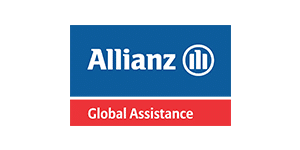Understanding Group Benefits
Group Benefits offer comprehensive insurance coverage for employees within an organization, including health, dental, vision, disability, and critical illness insurance. These benefits are more cost-effective compared to individual plans due to the risk being spread across a large group. Employers can tailor these packages to meet the specific needs of their workforce, enhancing employee satisfaction and loyalty.
Group Benefits insurance is a significant employee benefit that employers can offer. It provides many additional advantages for both workers and employers.
Key Advantages
Let’s delve into the advantages of group benefits:
Cost-Effective Coverage
- Group Benefits allows employers to negotiate lower premiums due to risk pooling. By covering a large number of employees, the overall risk is spread out, resulting in cost savings.
- Employees benefit from affordable coverage, as the cost is shared among the group.
Customizable Plans
- Employers can tailor benefit plans to suit different employee groups. This flexibility ensures that benefits align with varying needs and preferences.
- Customization may include options for health, dental, vision, disability, and life insurance, among others.
Attract and Retain Talent
- Offering comprehensive group insurance demonstrates an employer’s commitment to employee well-being. It enhances the overall compensation package.
- Competitive benefits attract top talent during recruitment and contribute to employee retention.
What Coverage is Included in This Plan?
The types and number of coverage included in this plan vary based on the provider and the employer’s budget. Some companies offer more or fewer benefits to their staff as a result.
Common examples of benefits that could be featured in a group benefit package include, but are not limited to:
Health and Dental Insurance
This coverage provides financial assistance for medical expenses, including doctor visits, prescription medications, dental care, and vision services. It helps employees maintain their health and well-being.
Basic or Optional Life Insurance
Life insurance offers financial protection to employees’ beneficiaries in case of their death. Basic life insurance is often provided by the employer, while optional coverage allows employees to purchase additional protection.
Critical Illness Insurance
Critical illness coverage pays a lump sum if an employee is diagnosed with a serious illness such as cancer, heart attack, or stroke. It helps cover medical costs and provides financial stability during recovery.
Long-Term or Short-Term Disability Insurance
Disability insurance ensures income continuity if an employee becomes unable to work due to illness or injury. Long-term disability covers extended periods, while short-term disability covers temporary absences.
Accidental Death and Dismemberment (AD&D) Insurance
AD&D insurance pays a benefit if an employee dies or suffers a severe injury (such as loss of limb or eyesight) due to an accident. It provides additional financial support beyond life insurance.
FAQ’s – Group Benefits
This FAQ section aims to provide even more valuable information on the topic of Group Benefits in Canada.













